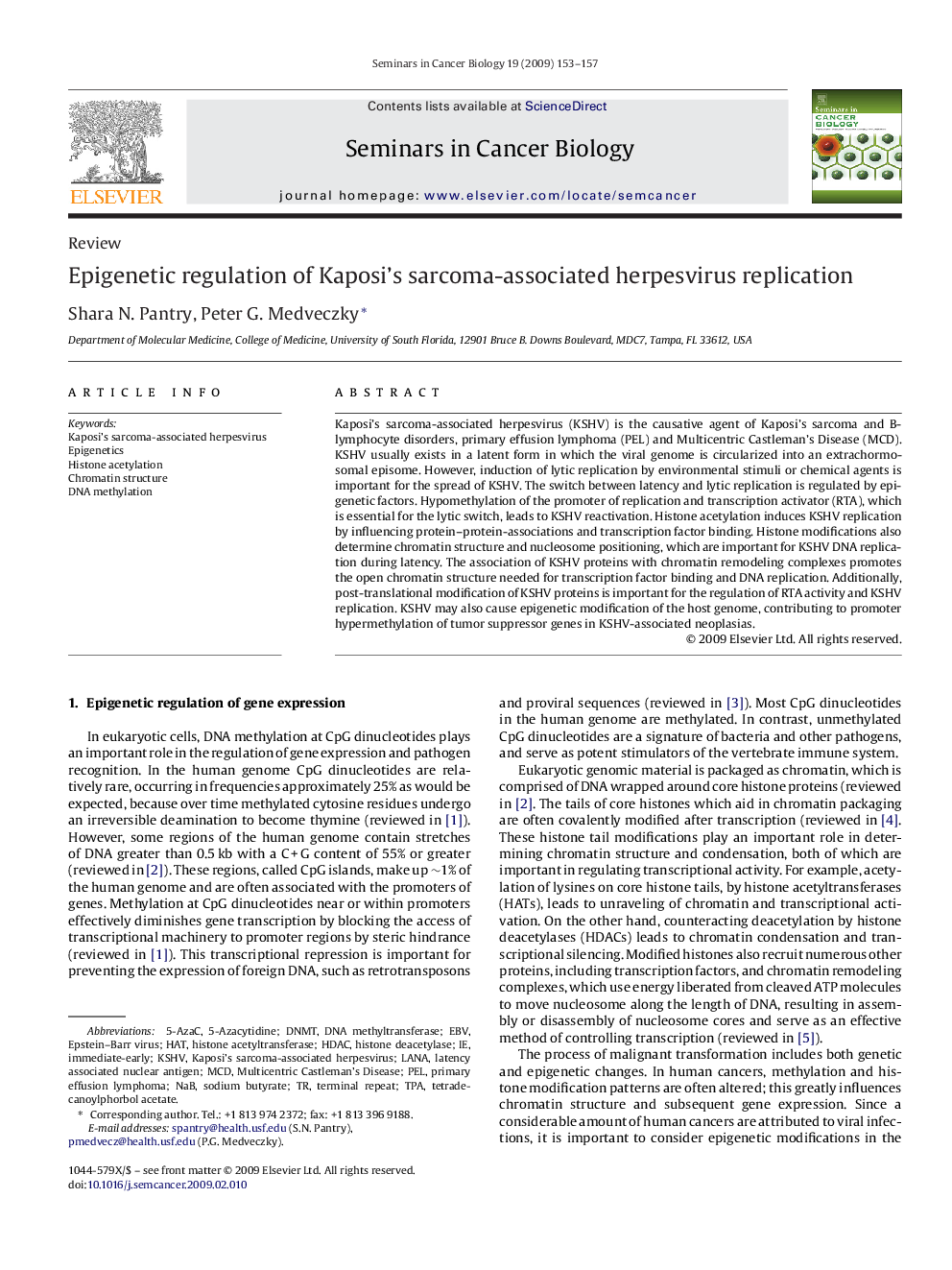| Article ID | Journal | Published Year | Pages | File Type |
|---|---|---|---|---|
| 2024014 | Seminars in Cancer Biology | 2009 | 5 Pages |
Kaposi's sarcoma-associated herpesvirus (KSHV) is the causative agent of Kaposi's sarcoma and B-lymphocyte disorders, primary effusion lymphoma (PEL) and Multicentric Castleman's Disease (MCD). KSHV usually exists in a latent form in which the viral genome is circularized into an extrachormosomal episome. However, induction of lytic replication by environmental stimuli or chemical agents is important for the spread of KSHV. The switch between latency and lytic replication is regulated by epigenetic factors. Hypomethylation of the promoter of replication and transcription activator (RTA), which is essential for the lytic switch, leads to KSHV reactivation. Histone acetylation induces KSHV replication by influencing protein–protein-associations and transcription factor binding. Histone modifications also determine chromatin structure and nucleosome positioning, which are important for KSHV DNA replication during latency. The association of KSHV proteins with chromatin remodeling complexes promotes the open chromatin structure needed for transcription factor binding and DNA replication. Additionally, post-translational modification of KSHV proteins is important for the regulation of RTA activity and KSHV replication. KSHV may also cause epigenetic modification of the host genome, contributing to promoter hypermethylation of tumor suppressor genes in KSHV-associated neoplasias.
